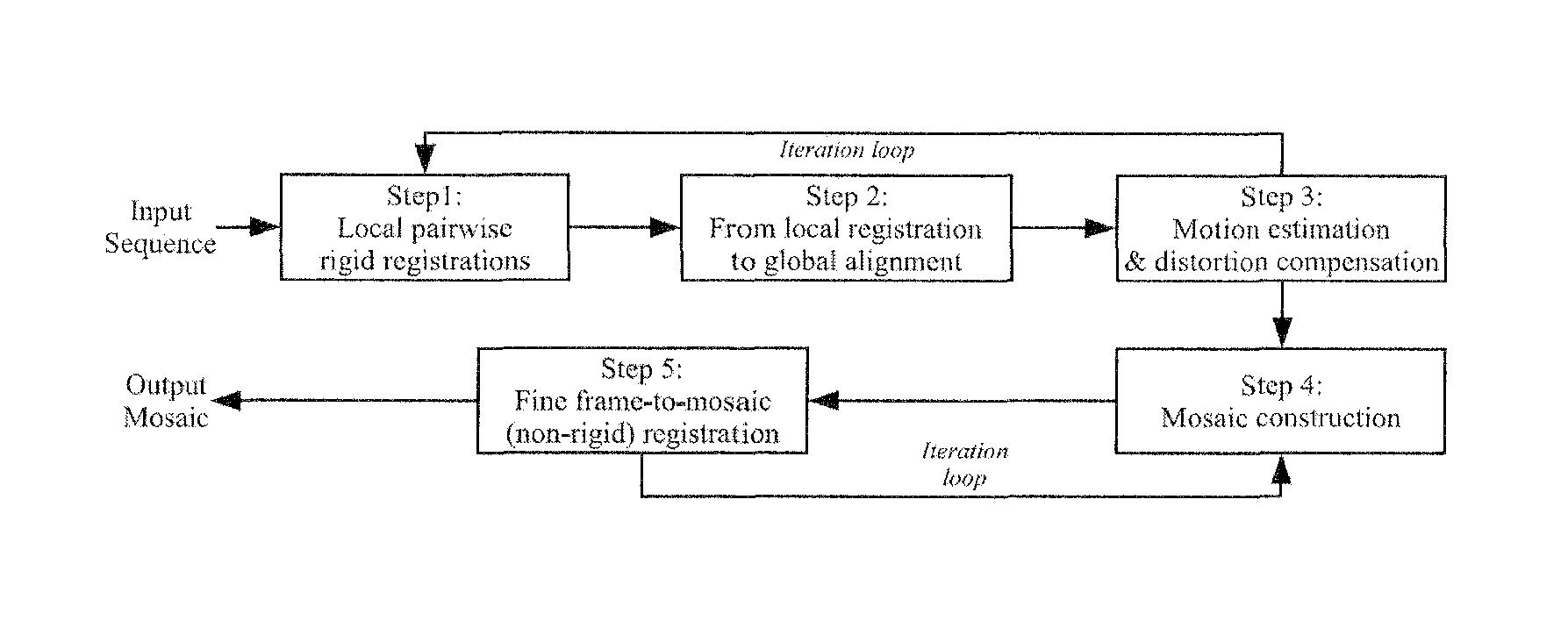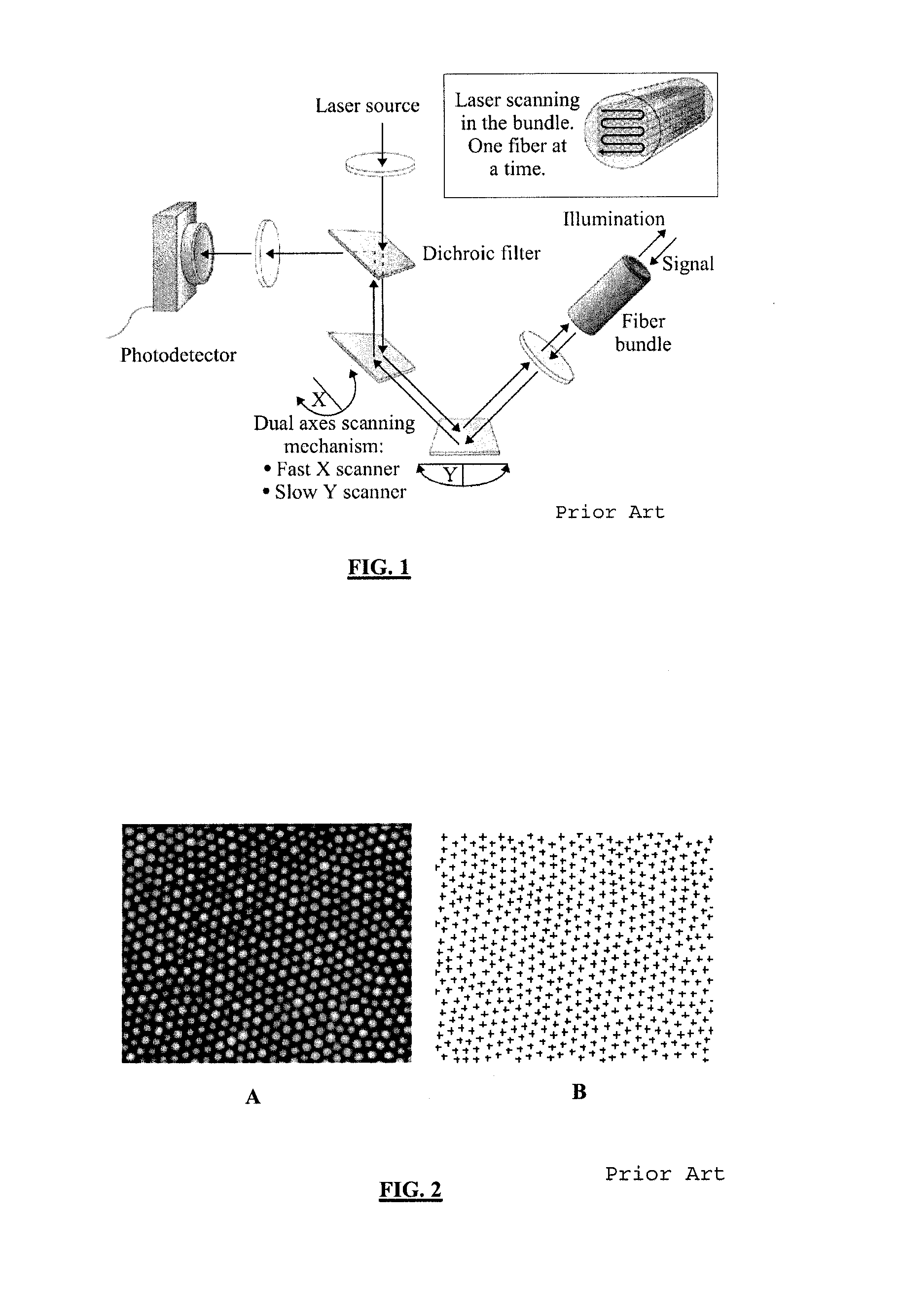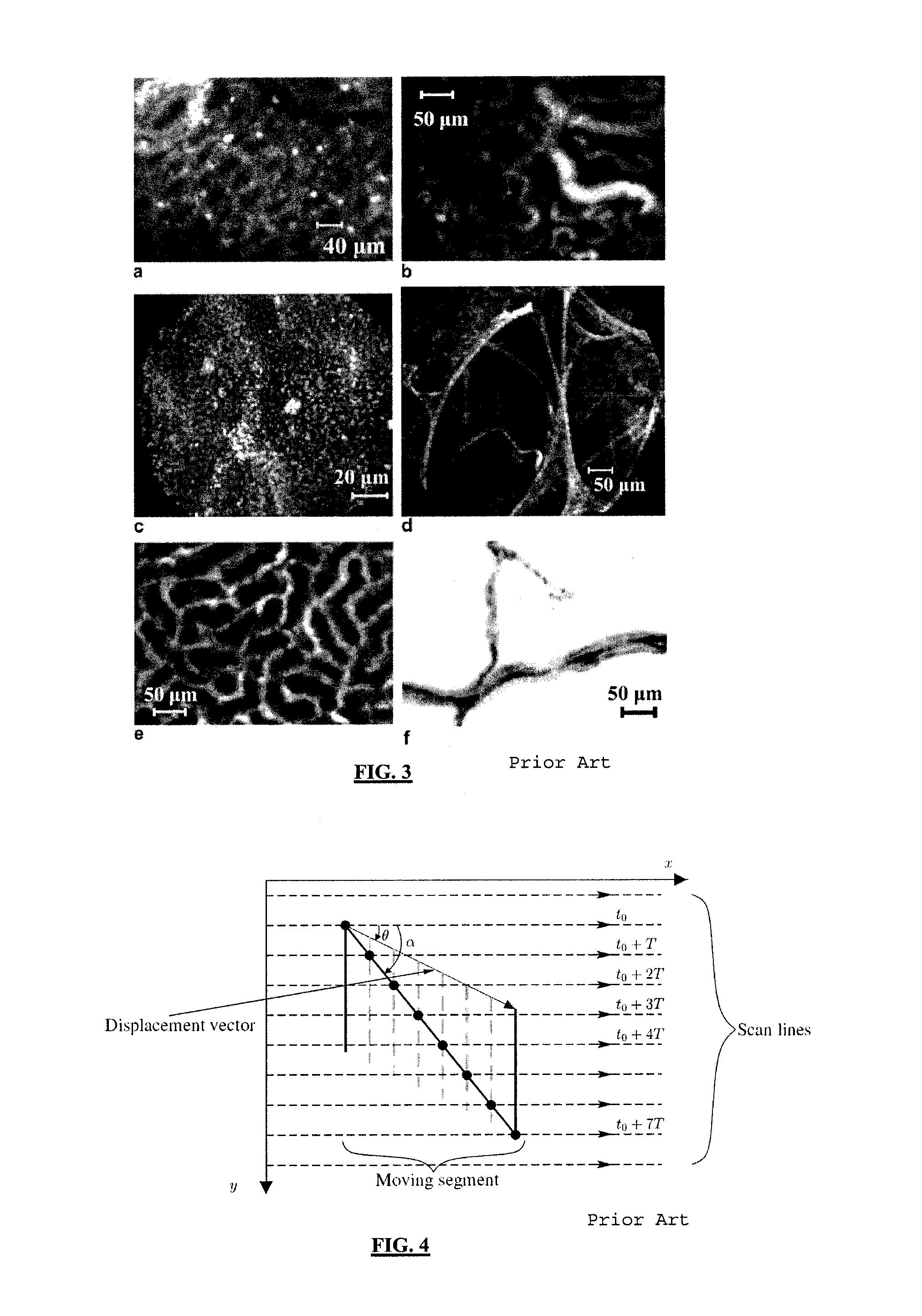Robust mosaicing method, notably with correction of motion distortions and tissue deformations for in vivo fibered microscopy
a fibered microscopy and mosaicing method technology, applied in the field of mosaicing algorithms, can solve the problems of creating additional small non-rigid deformations and motion artifacts
- Summary
- Abstract
- Description
- Claims
- Application Information
AI Technical Summary
Benefits of technology
Problems solved by technology
Method used
Image
Examples
Embodiment Construction
[0056]Although the invention is not limited to this, the method according to the present invention implemented in a confocal microscope with laser scanning in fibre mode will now be described.
[0057]The scanning of the laser can be decomposed into a fast horizontal sinusoidal component and a slow linear uniform vertical component. Horizontally, the imaging is done only on the central part of the trajectory, where the spot velocity is maximal and nearly constant. Since in this part, the spot horizontal velocity Vx (>5 m / s) is several orders of magnitude higher than the spot vertical velocity Vy (˜2 mm / s), we assume that the horizontal spot velocity is infinite.
[0058]An interesting point of scanning imaging devices is that the output image is not a representation of a given instant, but a juxtaposition of points acquired at different times. Consequently, if the flexible microprobe moves with respect to the imaged tissue, what we observe is not a frozen picture of the tissue, but a skew...
PUM
 Login to View More
Login to View More Abstract
Description
Claims
Application Information
 Login to View More
Login to View More - R&D
- Intellectual Property
- Life Sciences
- Materials
- Tech Scout
- Unparalleled Data Quality
- Higher Quality Content
- 60% Fewer Hallucinations
Browse by: Latest US Patents, China's latest patents, Technical Efficacy Thesaurus, Application Domain, Technology Topic, Popular Technical Reports.
© 2025 PatSnap. All rights reserved.Legal|Privacy policy|Modern Slavery Act Transparency Statement|Sitemap|About US| Contact US: help@patsnap.com



